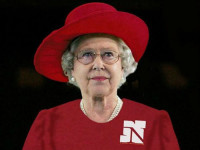ARM指令优化-Coding for NEON - Part 4: Shifting Left and Right
来源:互联网 发布:2vb空间日志在线播放 编辑:程序博客网 时间:2024/06/04 23:33
This article introduces the shifting operations provided by NEON, and shows how they can be used to convert image data between commonly used color depths. Previous articles in this series: Part 1: Loads and Stores, Part 2: Dealing with Leftovers and Part 3: Matrix Multiplication.
Shifting Vectors
A shift on NEON is very similar to shifts you may have used in scalar ARM code. The shift moves the bits in each element of a vector left or right. Bits that fall of the left or right of each element are discarded; they are not shifted to adjacent elements.
The amount to shift can be specified with a literal encoded in the instruction, or with an additional shift vector. When using a shift vector, the shift applied to each element of the input vector depends on the value of the corresponding element in the shift vector. The elements in the shift vector are treated as signed values, so left, right and zero shifts are possible, on a per-element basis.

A right shift operating on a vector of signed elements, indicated by the type attached to the instruction, will sign extend each element. This is the equivalent of an arithmetic shift you may have used in ARM code. Shifts applied to unsigned vectors do not sign extend.
Shifting and Inserting
NEON also supports shifts with insertion, providing a way to combine bits from two vectors. For example, shift left and insert (VSLI) shifts each element of the source vector left. The new bits inserted at the right of each element are the corresponding bits from the destination vector.

Shifting and Accumulation
Finally, NEON supports shifting the elements of a vector right, and accumulating the results into another vector. This is useful for situations in which interim calculations are made at a high precision, before the result is combined with a lower precision accumulator.
Instruction Modifiers
Each shift instruction can take one or more modifiers. These modifiers do not change the shift operation itself, but the inputs or outputs are adjusted to remove bias or saturate to a range. There are five shift modifiers:
- Rounding, denoted by an
Rprefix, corrects for the bias caused by truncation when shifting right. - Narrow, denoted by an
Nsuffix, causes the number of bits in each element of the result to be halved. It implies Q (128-bit) source and D (64-bit) destination registers. - Long, denoted by an
Lsuffix, causes the number of bits in each elements of the result to be doubled. It implies D source and Q destination registers. - Saturating, denoted by a
Qprefix, sets each result element to the minimum or maximum of the representable range, if the result exceeds that range. The number of bits and sign type of the vector are used to determine the saturation range. - Unsigned Saturating, denoted by a
Qprefix andUsuffix, is similar to the saturation modifier, but the result is saturated to an unsigned range when given signed or unsigned inputs.
Some combinations of these modifiers do not describe useful operations, and so the instruction is not provided by NEON. For example, a saturating shift right (which would be called VQSHR) is unnecessary, as right shifting makes results smaller, and so the value cannot exceed the available range.
Table of Shifts Available
All of the shifting instructions provided by NEON are shown in the table below. They are arranged according to the modifiers mentioned earlier. If you are still unsure about what the modifier letters mean, use the table to select the instruction you need.

An Example: Converting Color Depth
Converting between color depths is a frequent operation required in graphics processing. Often, input or output data is in an RGB565 16-bit color format, but working with the data is much easier in RGB888 format. This is particularly true on NEON, as there is no native support for data types like RGB565.

However, NEON can still handle RGB565 data efficiently, and the vector shifts introduced above provide a method to do it.
From 565 to 888
First, we will look at converting RGB565 to RGB888. We assume there are eight 16-bit pixels in register q0, and we would like to separate reds, greens and blues into 8-bit elements across three registers d2 to d4.
vshr.u8 q1, q0, #3 @ shift red elements right by three bits, @ discarding the green bits at the bottom of @ the red 8-bit elements. vshrn.i16 d2, q1, #5 @ shift red elements right and narrow, @ discarding the blue and green bits. vshrn.i16 d3, q0, #5 @ shift green elements right and narrow, @ discarding the blue bits and some red bits @ due to narrowing. vshl.i8 d3, d3, #2 @ shift green elements left, discarding the @ remaining red bits, and placing green bits @ in the correct place. vshl.i16 q0, q0, #3 @ shift blue elements left to most-significant @ bits of 8-bit color channel. vmovn.i16 d4, q0 @ remove remaining red and green bits by @ narrowing to 8 bits.The effects of each instruction are described in the comments above, but in summary, the operation performed on each channel is:
- Remove color data for adjacent channels using shifts to push the bits off either end of the element.
- Use a second shift to position the color data in the most-significant bits of each element, and narrow to reduce element size from 16 to eight bits.
A small problem
You may notice that, if you use the code above to convert to RGB888 format, your whites aren't quite white. This is because, for each channel, the lowest two or three bits are zero, rather than one; a white represented in RGB565 as (0x1F, 0x3F, 0x1F) becomes (0xF8, 0xFC, 0xF8) in RGB888. This can be fixed using shift with insert to place some of the most-significant bits into the lower bits.
From 888 to 565
Now, we can look at the reverse operation, converting RGB888 to RGB565. Here, we assume that the RGB888 data is in the format produced by the code above; separated across three registers d0 to d2, with each register containing eight elements of each color. The result will be stored as eight 16-bit RGB565 elements in q2.
vshll.u8 q2, d0, #8 @ shift red elements left to most-significant @ bits of wider 16-bit elements. vshll.u8 q3, d1, #8 @ shift green elements left to most-significant @ bits of wider 16-bit elements. vsri.16 q2, q3, #5 @ shift green elements right and insert into @ red elements. vshll.u8 q3, d2, #8 @ shift blue elements left to most-significant @ bits of wider 16-bit elements. vsri.16 q2, q3, #11 @ shift blue elements right and insert into @ red and green elements.Again, the detail is in the comments for each instruction, but in summary, for each channel:
- Lengthen each element to 16-bits, and shift the color data into the most significant bits.
- Use shift right with insert to position each color channel in the result register.
Conclusion
The powerful range of shift instructions provided by NEON allows you to:
- Quickly divide and multiply vectors by powers of two, with rounding and saturation.
- Shift and copy bits from one vector to another.
- Make interim calculations at high precision and accumulate results at a lower precision.
In the next article, we will look at some of the other data processing instructions provided by NEON.
From: http://blogs.arm.com/software-enablement/277-coding-for-neon-part-4-shifting-left-and-right/
- ARM指令优化-Coding for NEON - Part 4: Shifting Left and Right
- NEON------------Coding for NEON - Part 4: Shifting Left and Right
- Coding for NEON - Part 4: Shifting Left and Right
- ARM指令优化-Coding for NEON - Part 3: Matrix Multiplication
- ARM指令优化-Coding for NEON - Part 5: Rearranging Vectors
- ARM指令优化-Coding for NEON - Part 1: Load and Stores
- ARM指令优化Coding for NEON - Part 2: Dealing With Leftovers
- ARM指令优化-Coding for NEON - Part 2: Dealing With Leftovers
- NEON-----------------Coding for NEON - Part 1: Load and Stores
- Coding for NEON - Part 1: load and stores
- Coding for NEON - Part 1: Load and Stores
- Coding for NEON - Part 3: Matrix Multiplication
- Coding for NEON - Part 5: Rearranging Vectors
- NEON-------------Coding for NEON - Part 2: Dealing With Leftovers
- NEON----------Coding for NEON - Part 3: Matrix Multiplication
- NEON---------Coding for NEON - Part 5: Rearranging Vectors
- neon指令集(arm平台优化)
- Coding for NEON - Part 2: Dealing With Leftovers
- 升级最快双核 小米1S手机开箱多图赏析
- _bstr_t cstring转换
- STC PCR
- 数据系列:通过Windows Azure SQL数据库防火墙规则控制数据库访问
- JPA(Java Persistence API)Java持久化API-介绍
- ARM指令优化-Coding for NEON - Part 4: Shifting Left and Right
- Trunk和native VLAN
- Oracle dataguard 正常切换和应急切换
- C#图片上传,加水印,自动生成缩略图类
- poj 1703 Find them, Catch them
- MySQL5.x处理中文全解
- php 得到上周,本周,上月,本月,本季度,上季度
- 深入浅出设计模式笔记之十八:状态模式
- Spring集成JMS


